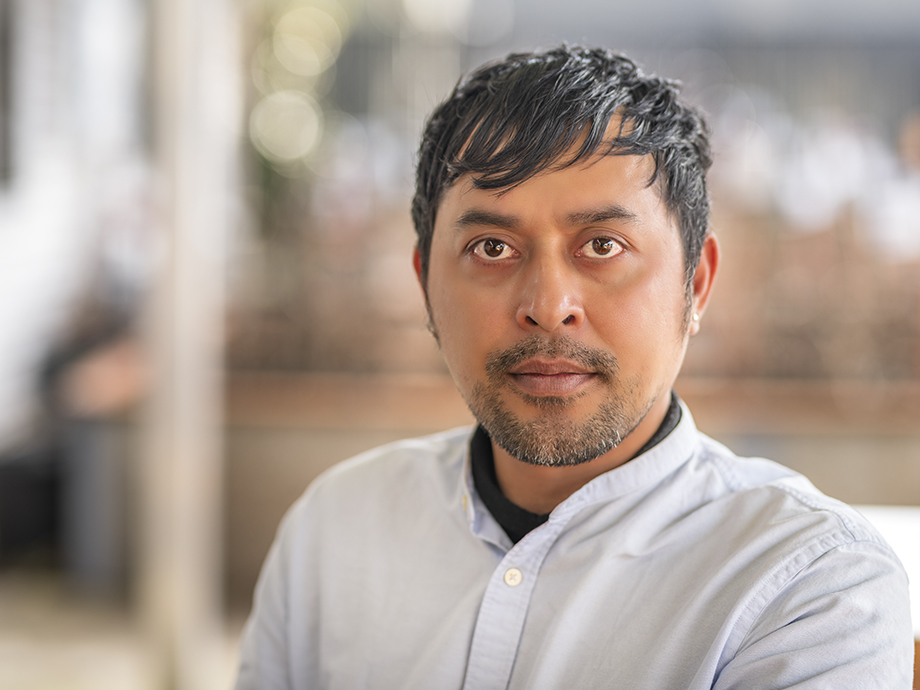After 11 years apart, Pyae Sone Aung finally has hopes of reuniting with his wife and son. Originally from a small town in Myanmar, Aung has gone from country to country in search of a home and has currently found that in Portland, Oregon, where he hopes his family will soon join him.
Aung, a Burmese Muslim, was born in 1985 in Mawlamyine, Myanmar, in the Mon state. Growing up, he paid little attention to religious or ethnic differences. His best friend was Chinese Buddhist, and he fondly remembers attending Buddhist fairs during the summer, and celebrating Ramadan with his own family.
In 1990 the government held free elections for the first time and the National League for Democracy (NLD) party, cofounded by former State Counsellor Aung San Suu Kyi, won a majority of votes. However, the military junta refused to cede power and in 1996, student protests began to reemerge. At that time, Aung’s life began to change because his grandfather was active in the NLD party and their house was the state NLD party office. The police frequently came to his home to monitor Aung and his family.
Around the seventh grade, Aung began to notice inequalities between him and the other students. As did every Muslim, he was given a Green Card, classifying him as a secondary resident but not a citizen. In school, the other students called him a “kalar.” The term, which translates to mean “native of the Indian subcontinent” is used in Myanmar as an anti-Muslim slur.
The teacher did not help him when he was bullied, he recalls. “So why would I go to report to the teacher or the principal?” he asked himself. “If you say kalar, I’m going to say something back to you.”
Aung graduated from high school in 2001 and attended law school at the local university in Yangon. But he dropped out after a year, disappointed at the poor education available to Muslims.
“If you are not rich in Burma, if you don’t have much money, you will not get a proper education,” he comments.
In 2007, his family joined Aung in Yangon because there were few opportunities for them as Muslims in their small town. At that time, Yangon was still a safe place for Muslims but outside of the city, there was a steady increase in persecution and killing of Muslims by Buddhists.
In 2011, Aung married his wife Htoo Mon Aung, a Muslim from the Kayin state, where many rebel groups were active. They met when she was an accounting student in Yangon and when she graduated, they got married. Their son was born in March, 2013.
Beginning in 2012, tensions between the Buddhist majority and Muslim ethnic groups escalated. Aung joined an NGO (non-governmental organization) that advocated for peace and emphasized unity over divisions. As the 969 movement, a Buddhist anti-Muslim terrorist group, engaged in increasingly violent behavior throughout the country, Aung attended a peace conference in 2013. Frustrated by the inaction of the government, Aung asked the advisor at the conference for the list of names of members of this 969 group. As he began to question the group, he became their target.
One day, the owner of a tea shop where Aung often went approached him. “Someone came to my tea shop asking for you,’” the man told Aung. “You need to leave and go somewhere else for a while. Otherwise, you will be disappeared.”
“That was around four o’clock in the afternoon,” Aung remembers. “The next morning at 11 am I left the country.”
Aung left his wife and son with his in-laws and flew to Indonesia. Three months later, he set off for Christmas Island, Australia, in a small boat crammed with 79 people. After a day and a half at sea, the boat began to break apart.
“Wherever you looked, there was only water,” Aung remembers. “Nothing else. The waves were really big. I didn’t have any food, any water, a lifejacket, anything. I didn’t want to give up easily. But after three days, I’m done.”
Aung managed to find a life jacket, then tied himself to the boat and went to sleep, preparing to die. The next morning, around noon, he awoke and heard a low noise but saw nothing. Soon he and his fellow passengers saw an Australian coast guard plane overhead. They were picked up by a ship from the Australian Navy and given food and medical treatment. After eleven days, Aung was transferred to Manus Island.
Manus Island belongs to Papua New Guinea, but the offshore processing center for refugees there was run by the Australian government. Men seeking to enter Australia were sent to Manus, while women and children were sent to a different detention center on Nauru Island, a small island nation in Micronesia.
Life on Manus Island was difficult and dangerous, says Aung. The refugees came from many countries: Iran, Syria, Nepa, Sri Lanka, Somalia, Sudan and Albania. The refugee camp was isolated from the rest of the island and residents often didn’t receive needed medical treatment. During his almost five years there, eleven people died.
In one protest on the island in 2014, Aung narrowly missed being shot. Even so, he was injured when glass from a nearby window lodged in his shoulder.
“We were not allowed to go out. They locked us in behind a 20-feet tall fence. There was no air conditioning and it was like baking in an oven. We called it a second Guantanamo Bay,” Aung remembers.
Eventually Aung and the other men were able to smuggle in a phone from local residents so they could talk to their families.
Aung’s mental and physical health began to deteriorate so sharply after a year and a half at Manus Island that he attempted suicide. He decided that he had to leave and asked to return home. But his application to return was denied by the Burmese government. Australia would not admit any of the refugees, so that was not an option either. Finally the immigration officers allowed Aung to move to Port Moseby, the capital of New Guinea, where he was placed in a hotel room and given a weekly stipend.
In 2018, Aung was given the opportunity to come to the United States as part of a refugee swap deal made by President Obama and the Australian government in which refugees from Manus and Nauru Island were able to come to the United States and refugees from Central America went to Australia. The refugee center at Manus Island was shut down in 2021.
When asked by the immigration officer where he wanted to go, Aung asked for a safe place with cool weather and arrived in Portland in 2018. He worked a few short-term jobs, then realized that he wanted to be the resource person that he didn’t have when he arrived in the U.S. In 2020, he became a case manager for refugees at Lutheran Community Services.
Aung has not seen his son or wife for nearly eleven years but is traveling to Malaysia shortly to reunite with them. He hopes that they will be able to return with him to Portland but he is still awaiting final approval.
“Life is teaching me a lot,” Aung says. “ And now, every day my son calls me and he asks me a lot of questions. So, I still need to learn a lot of things for my son.”

